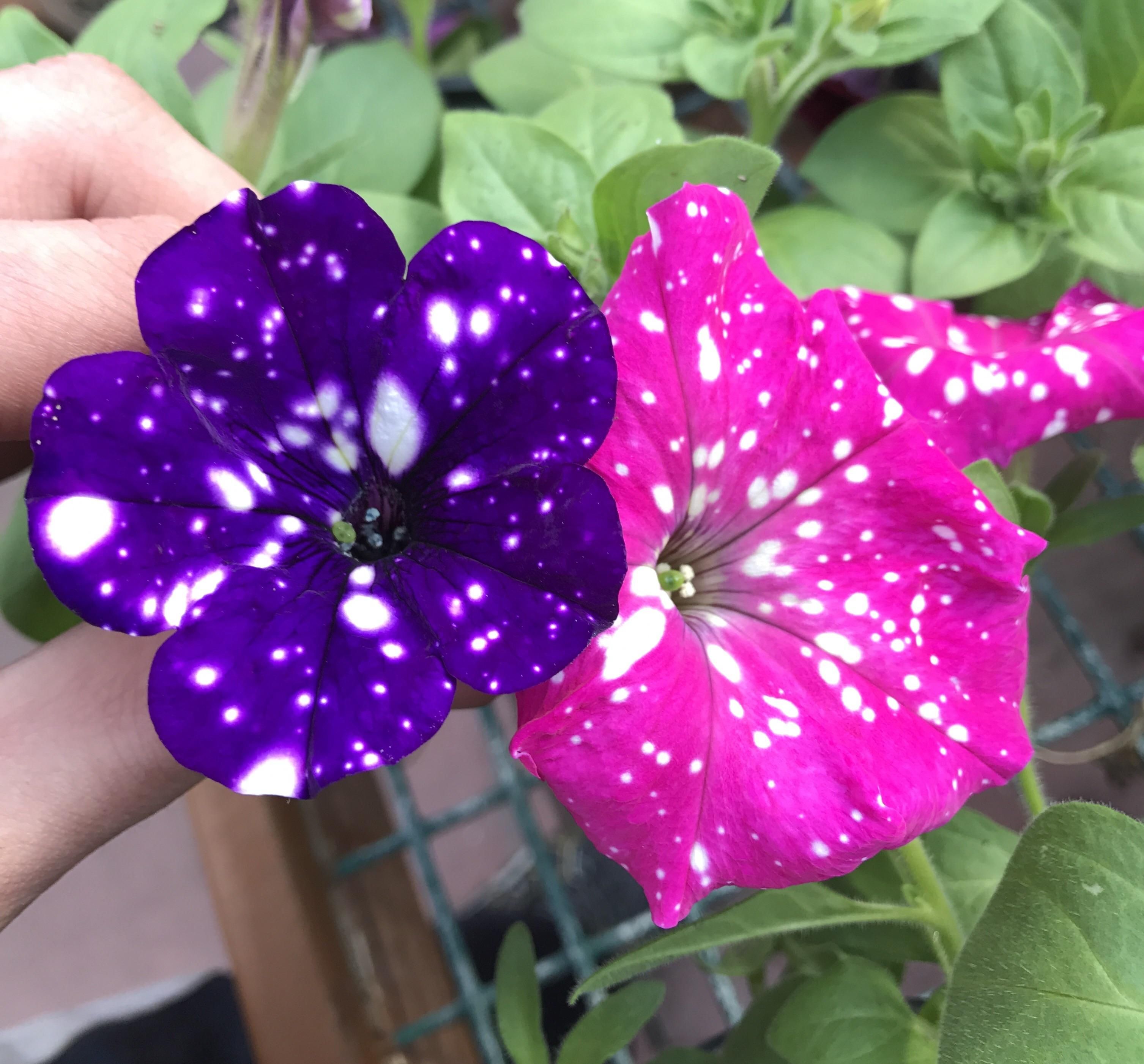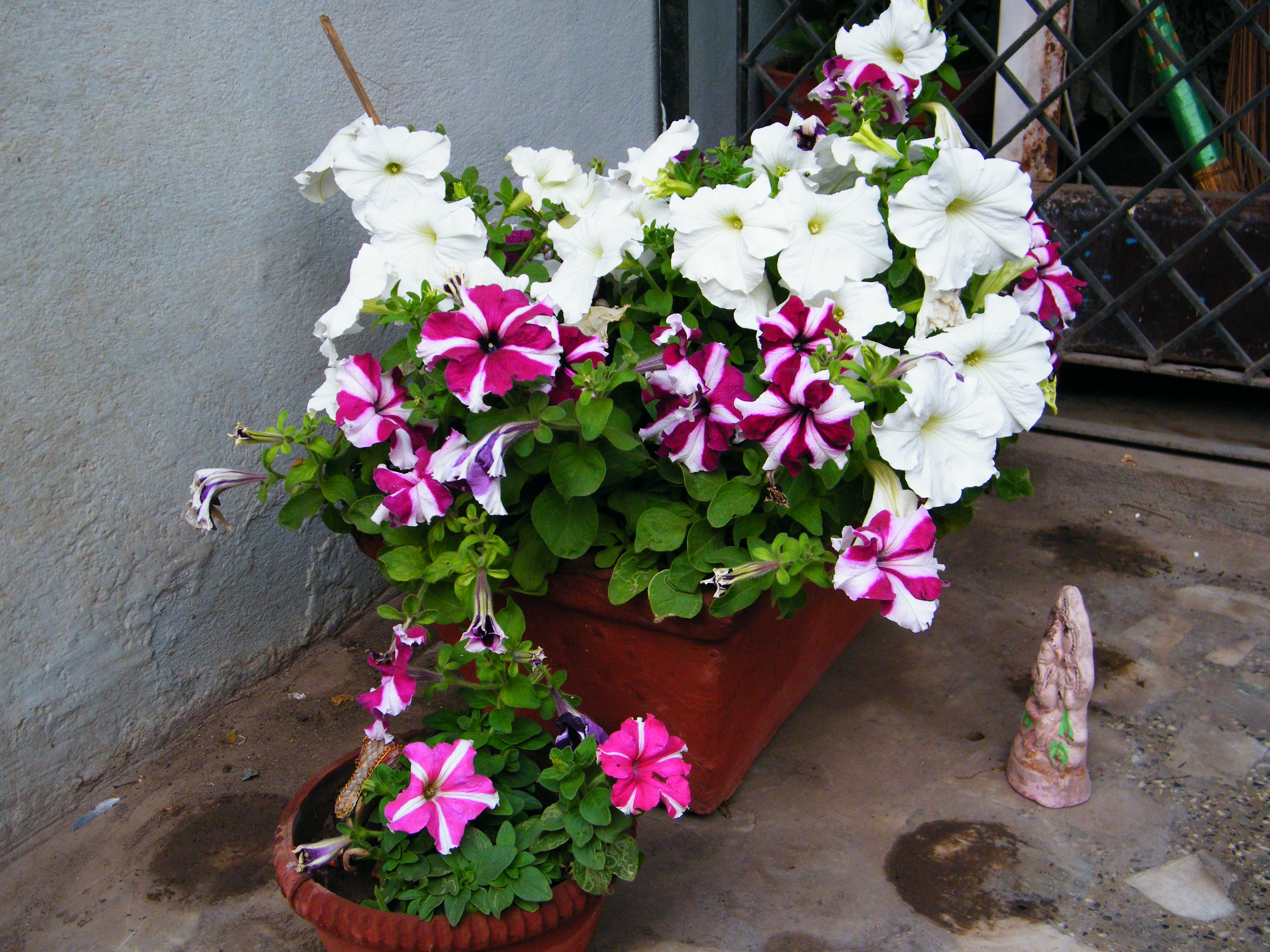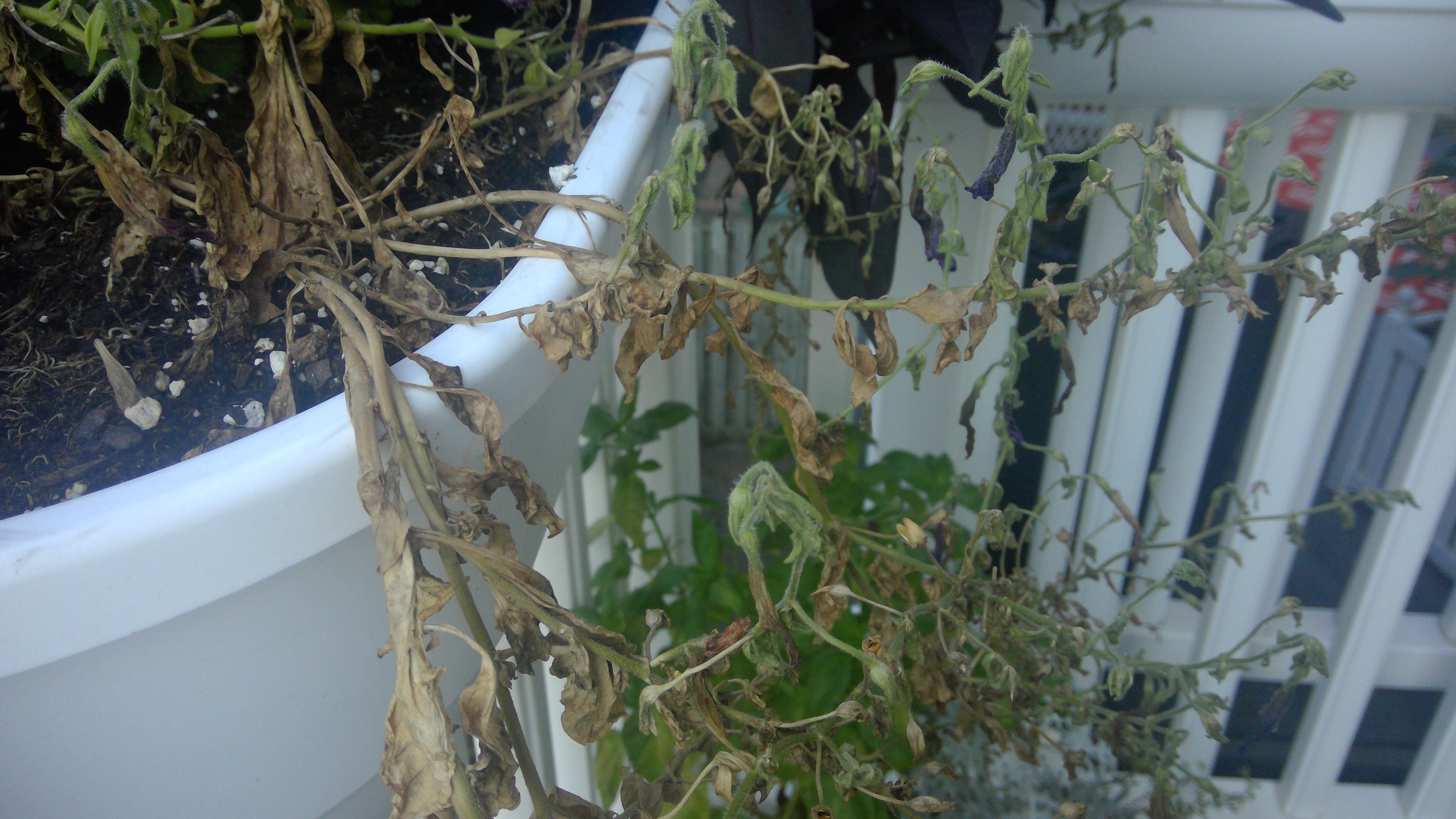Enjoying the stunning patterns of the galaxy flower will blow up your imagination to the interstellar space. This cultivar is a kind of Petunia cultivar that looks like a starry night with lots of celestial objects. It becomes a smart solution to gaze at the far-off universe.
Therefore, bring an otherworldly treatment to your landscape with the Night Sky flowers. This following article will present what to know about these pretty Petunias. Learn more about them before starting to grow the sparkling blossoms in the garden.
Characteristics of Galaxy Flower

Petunia Night Sky is the botanical name of the galaxy flower. It has green foliage with purple, blue, and white blooming colors. This annual plant blooms in the early summer, fall, and late spring season. The general characteristics of the celestial blossom are:
- Sessile leaves
- Funnel-shaped flowers
- Insect-pollinated plant
- Compact upright and sprawling types
The bold purple petals pair with white dot markings will create a glittering contrast to the light green leaves. This compact herbaceous plantation has a mounded growth habit so it can function as fillers in the containers.
Furthermore, Night Sky blossom grows about 25 to 41 centimeters tall. This semi-trailing plant can spread at a width of 61 to 91 cm. Thus, if you cultivate this flower in the backyard, keep a distance from one individual to another. Its space is about 23 or 31 cm apart.
Interesting Facts about Galaxy Petunia

An interesting fact about the Galaxy flower is featuring distinctive white spots. There are not two petal patterns that look the same. Also, the various numbers of splotches depend on everyday temperatures.
The petals will be more in white hue when there is too much coolness, whereas they turn completely purple at a warm temperature. Therefore, the warmth during the days and cold nights can balance both colors.
The Petunia is initially an ordinary leggy plant that brings diversity in colors. It comes in red, yellow, pink, white, and a combination of varied patterns. This celestial flower closely relates to tobacco, eggplants, and potatoes.
The Galaxy flower was bred in 2015 as a notable advance of the Night Sky variety that has high-quality plant features. Nowadays, they have become the most attractive cultivars. Some beneficial uses of the cool blossoms are:
- Embellish the flower beds
- Attract butterflies and hummingbirds
- Give pleasant fragrant
- Function as ground cover
- Become houseplants in containers
Furthermore, other unique colorations have been created to combine with the white spots. Various sizes of speckles enhance the appearance of the petals with magenta, lavender, and royal purple shades.
They resemble the shimmering stars in the night sky. Compared to Galaxy rose, the holographic coated actual flower, the Petunia is more appealing, and it also gives a heavenly aromatic scent.
Varieties of Galaxy Flower

Petunia has 35 species that belong to the family Solanaceae. It comes in either single-bloom or double-bloom types. For the Galaxy cultivars, three amazing varieties include:
- Night Sky
The Night Sky Petunia cultivar has deep purple flowers. The dark grayish-green leaves have ovate shapes and sticky-hairy surfaces. Also, this mound-shaping perennial is mostly cultivated in pots or garden beds.
- Pink Sky
This variety has cherry hot pink blossoms with lots of white speckles on the petals. The density of the markings is based on light, soil pH, and temperature. Enjoy the eye-catching flowers in hanging baskets or planters.
- Violet Gemini
Petunia Galaxy Gemini provides electric violet flowers with splashes of white hue. This new Night Sky variety offers more consistent starry patterns. Therefore, the stargazing blossoms will be more glittering as well as the glass rose.
Celestial Petunia Lifespan

The galaxy flower can have a lifespan of about three years, even though this is an annual plant. Some factors that will extend the existence of the blooms are:
- Take care of the Night Sky blossoms properly.
- Protect the plants from the cold temperature to restore the bright color for the next growing season.
- If you cultivate the Galaxy flower in the garden, move the plant to the pots and place it in a greenhouse. Keep the planters in covered areas like the garage.
- Let the flowers become a green houseplant inside the house before blooming in the spring season outdoors.
How to Grow Galaxy Night Sky FLowers

Growing these cool flowers will be easy as long as you can provide the proper conditions that they need. Most varieties can be planted in any soil type, whether indoors or outdoors.
Parameters of Growing Galaxy Flower

There are some things to consider before starting to grow the Night Sky flowers in the landscape. They are:
- Soil Type: Sandy or loamy.
- Planting area: Sunny spots, moist, well-drained, and rich in nutrients.
- Soil pH: neutral, acidic, alkaline.
- Light: Full sun (at least 5-6 hours every day).
Seedlings

Sow the Petunia seeds earlier indoors. After two months, you can transplant them outside. Follow these instructions for seedlings:
- Use a seed starter kit for seedlings.
- Press the seeds into the formula without soil.
- Seedlings rise in 2 weeks. Provide light 16 hours per day. Choose fluorescent lamps instead of incandescent bulbs.
- Make the seedling thinner after developing two sets of leaves.
- After one month, feed the plants with a starter solution.
- Introduce young plants to outdoor conditions by placing them in a sheltered area outside for seven days.
- Protect young plants from direct sun and wind.
- At night, cover the plants when frost threatens or move them inside.
Cultivating Potted Plants in the Garden

After the plants have been hardened off successfully, they will be tougher. Thus, it is the best time to transplant them outdoors. The procedures are as follow:
- Choose a planting area with full sun exposure, humid, and proper drainage.
- Remove any rocks and grass before preparing the beds.
- Add compost or any organic matter to the soil surface. Alternatively, top the land with mulch.
- Keep space at 15 to 30 cm apart.
- Dig a hole for each individual with adequate size to adjust the root ball.
- Cover with soil up to the top surface.
- Press the soil surface solidly with hands.
- Water the plants regularly.
Maintenance of Galaxy Flower

During the growing season, you should do regular maintenance and pruning to keep the plants thrive well and stay healthy. To help them developing flowers, add fertilizer every three weeks for cultivating outdoors. Trimming and deadheading should be well-maintained as required.
Care for Galaxy Flower

Some elements and requirements should be well-maintained during the growing season. Have a look at these important things to consider:
- Control the weeds since they will take the nutrition, water, and space.
- Prevent any grass from germinating by planting more often.
- Retain the soil temperature and humidity by adding mulches.
- Save the stem from sawdust or any protective covering to avoid the rot.
- Use a rain gauge to check whether the plant needs more water.
- To reduce any health problems, water your Petunia with a trickle system or drip instead of overhead sprinklers
- Protect the Night Sky blossoms from hot sunlight and extreme wind.
- Allow air circulation among the individuals.
- To enhance a compact growth and induce branching, pinch back the shoots.
- Keep deadheads off to encourage better and bigger blossoms.
Pests and Diseases Control

While taking care of the Galaxy flower, be aware of several diseases and pests that may damage the plant. Although this plant looks tough and tolerates any abuse, the plagues may affect the growing Petunia.
Specific Pests of Night Sky Blossoms

Plenty of specific pests that can cause problems with the plants are:
- Caterpillars: This wormlike larva will chew the buds and leaves. It usually hides inside the thick foliage. The best solution is removing the pest by hand.
- Mites: This pest causes the leaves to curl and harshens the flowers. To solve the problem, spray with neem oil every week.
- Thrips: The color break of the Galaxy flower occurs because the existence of this pest will bring viruses.
- Other Pests: Slugs, snails, Aphids, leaf-mining sawflies, and glasshouse whiteflies.
Common Diseases

The following lists are the specific diseases that might affect the Galaxy flower and cause some problems to the growth:
- Botrytis Blight: Discoloration and spots happen to petals and leaves that grow brownish-gray spores. This disease occurs due to wet conditions in the raised beds. Therefore, slacken the water when the sign appears. Also, prune the infected parts and throw away the debris.
- Root Rot: This illness also affects on stems and crowns. It happens in a planting area with poor drainage or overwatered conditions. Its leaves wilt, then the stems soften, although routine watering. Thus, amend the system of drains and do the watering rarely.
- Powdery Mildew: The plant that is impeded by airflow due to a tight space will experience this problem. However, wet conditions are not the cause that makes the disease appears. Some white spores cover the leaves and flowers. Thus, use neem oil to treat it.
- Viruses: They cause yellow spots, bullseyes, halos, and mosaics. Unluckily, this problem cannot be treated. To minimize the infection, give extra caution while trimming the plants. Small insects usually guide them to affect the Galaxy flower.
- Verticillium Wilt: This illness droops the plant’s strength. There will be some sections to die initially or older leaves to wither before the younger ones. To reduce fungal infection, heat the planting area by exposing the soil with intense sunlight.
Smart Planting Tips

Sometimes, growing the Galaxy flower seems to be tricky. You need to manage the plant well since a pattern change may occur. Pay attention to the conditions in the environment. Here are many tips to follow:
- The initial cultivation should be in the spring season (cold temperature).
- Determine what pattern you expect to the flowers. There are more starry blotches at a cold temperature. Meanwhile, the petals will look more purple in a warm condition.
- Allow the plants to get enough sun exposure to set more blossoms. Low light might cause stretching and leggy growth.
- Do not use soggy soil in the planting area.
- Apply 10-10-10 fertilizer since constant blooming takes lots of energy.
- The best time to start seedlings is in late February, although most areas have a perfect season to grow the Night Sky in mid-May or early-June.
- Avoid waterlogging the Petunia, yet supply sufficient liquid.
- Give a dry-out condition before starting the next watering to prevent any disease.
- Improve the soil quality by adding iron.
- Prefer hanging installation to hide unpleasant spots around the house and to give an eye-catching display.
Companion Plants for Galaxy Petunia

The Night Sky blossoms look perfect in any growing media. They grow well in raised beds, containers, hanging baskets, or pots. The pops of various vibrant hues with sparkling white splashes work great with other plantations. Vegetables and herbs become good companions.
Think about some smart ways to combine the Galaxy flower with other companion plants, such as:
- Plant three types of small Petunias only in a 30-cm hanging basket.
- Choose higher flowers behind the low-growing Night Sky blossoms in the raised bed to display lots of colorful petals.
- Add flowers with contrasting colors to the sides of Petunias to create a more attractive appearance.
- Combine the Galaxy flower with full sun plants since they will thrive well in more sunlight exposure.
- Select the companions that give season-long enjoyment.
- Use sturdy plants to balance this vigorous Night Sky bloomers.
- Utilize a pot with drainage holes if you want to combine the Petunia with other small plants.
Tall and spiky blooming plants will balance the mounds of the Galaxy flower. Some varieties that can be placed behind and the sides of these flowers are:
- candytuft
- Lupines
- Iris
- Allium
- Red Salvia
- Black-eyed Susan
- Daisies
- Snapdragons
- Bright Blue Lobelia
- Delphiniums
- Orange Dwarf Zinnias
Additionally, some other varieties become great companions in hanging baskets, such as:
- Calibrachoa: This low-trailing plant has abundant blossoms as well as the Petunia.
- Verbena: There are small grouped flowers from this type that have white, purple, and pink blooms.
- Bacopa: It is the best choice to avoid being overwhelmed by the Petunia. Its blue and white flowers grow at a width of 1.3 cm.
In conclusion, the galaxy flower is a perfect addition to beautify your celestial-themed garden. Have a good time with the cosmic spark that it offers to the backyards and indoors.